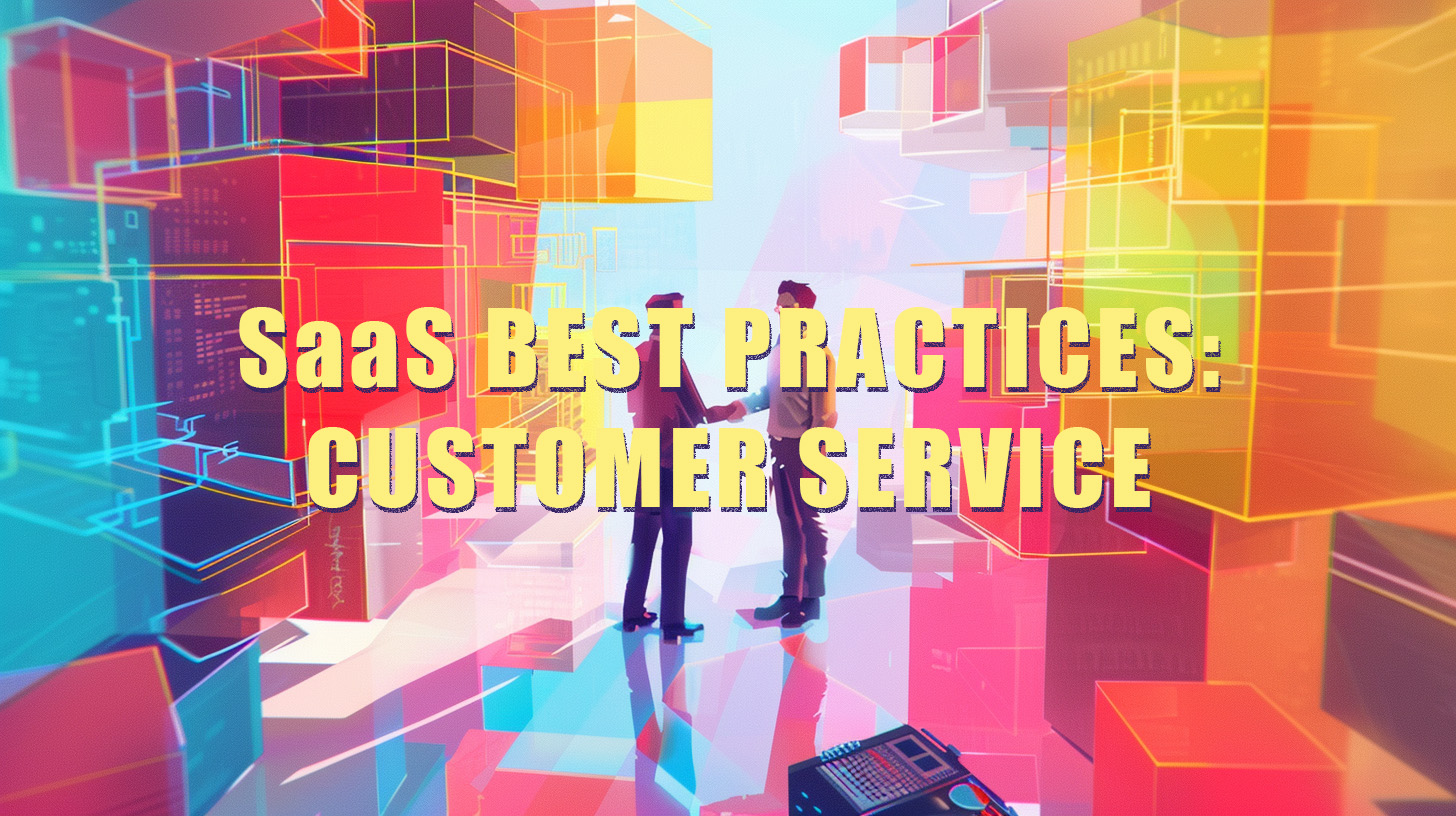
SaaS Customer Service: Why Human Touch Matters in a Digital World
May 15, 2024 3 minutes
As someone who’s been in the software as a service game for a while now, I can confidently say that customer support is the secret sauce to a thriving business. Trust me, when it comes to keeping your clients happy and reducing churn rates, you can’t afford to skimp on top-notch customer service.
I recently came across this eye-opening article on Fast Company that really drove home the importance of human interaction in customer support. The article dug into a survey that pitted AI chatbots against human agents, and guess what? Human customer support knocked it out of the park in 7 out of 10 key areas! We’re talking complex problem-solving, resolving issues in one go, and even giving customers a chance to vent their frustrations. The survey also found that most folks were willing to wait on hold just to talk to a real person about their concerns, rather than dealing with an AI assistant.
I’ve learned firsthand that human touch is the key to unlocking customer satisfaction. Sure, AI chatbots and automation have their place in streamlining simple tasks and boosting efficiency, but they can never replace the empathy, understanding, and personalized support that human agents bring to the table.
This post will cover customer service best practices for SaaS companies and how to properly implement AI to expand the lifecycle of your product and the customer’s loyalty.
Own a SaaS product? We can help secure your payment data!
Top 5 Best Practices for SaaS Customer Service
1. Provide Multiple Support Channels
If you want to keep your customers smiling, you’ve got to give them options when it comes to reaching out for help. Don’t just stick to one support channel and call it a day. Offer a variety of mediums, like email, phone, live chat, and social media, so your users can choose what works best for them.
Trust me, being accessible and responsive across multiple channels is a game-changer in the world of SaaS customer service.
2. Offer Comprehensive Onboarding and Training
Let’s talk about setting your customers up for success from day one. Investing in comprehensive onboarding and training is an absolute must for any SaaS business. Create detailed guides, tutorials, and FAQs that walk users through your software’s features and functionality. And don’t be afraid to go the extra mile with personalized training sessions or webinars.
The more comfortable and confident your customers feel using your product, the less likely they’ll be reaching out for support down the line.
3. Prioritize SaaS Security and Privacy
Data security and privacy are non-negotiable. As a SaaS provider, it’s your responsibility to safeguard your customers’ sensitive information from data breaches. Implement strong access controls, multi-factor authentication, and data encryption to prevent breaches and vulnerabilities. Be transparent about your cybersecurity measures and comply with regulations like GDPR.
Showing that you take customer data protection seriously will go a long way in building trust and loyalty.
4. Continuously Gather and Act on Customer Feedback
Want to know the secret to improving your SaaS offering? It’s simple: listen to your customers!
Continuously gather feedback through surveys, user testing, and customer interactions. Pay attention to their pain points, feature requests, and overall satisfaction levels. Then, use that valuable insight to make data-driven decisions and prioritize updates that address their needs. By showing your customers that you value their input and are committed to enhancing the user experience, you’ll foster a sense of partnership and loyalty that’s hard to beat.
5. Ensure Seamless Integration and Scalability
Last but not least, let’s talk about the importance of seamless integration and scalability. Your SaaS solution should play nice with other tools and platforms your customers are already using. Make sure your API is well-documented and easy to work with, so users can integrate your software into their existing workflows without a hitch. As well, monitor metrics to focus on the integrations that are implemented most often.
And as your customers’ businesses grow, your SaaS application should be able to scale right alongside them. Invest in a robust SaaS architecture that can handle increased usage and data storage needs, so your users can rely on your software to support their evolving business needs.
As a bonus, here’s a guide on SaaS pricing and how to maximum retention and profitability in a freemium environment.
Scale your SaaS business with the right checkout partner.
Why AI Chatbots Might Not Be the Best Solution
Don’t get me wrong, chatbots can be incredibly useful for handling simple, repetitive tasks and providing quick answers to common questions. But when it comes to tackling complex issues that require a more nuanced approach, AI chatbots often fall short.
Here’s the thing: when customers are facing a tricky problem or have a unique concern, they crave the empathy and understanding that only a human agent can provide. People want to feel heard and validated, and they want to know that someone is truly invested in resolving their issue. AI chatbots, as advanced as they may be, simply can’t replicate the emotional intelligence and personal touch that human support offers.
In fact, studies have shown that people are willing to wait on hold for a real person rather than trying to navigate a complex issue with a chatbot. There’s just something reassuring about knowing that you’re talking to a fellow human who can relate to your frustration and is dedicated to finding a solution. Chatbots, on the other hand, can come across as cold, generic, and unable to grasp the full context of a customer’s problem.
What AI Chatbots Are Best Used For
I’m not saying that AI chatbots are useless. Far from it! When it comes to handling simple, repetitive tasks, chatbots can be a real lifesaver. They’re fantastic for answering frequently asked questions, providing basic troubleshooting steps, and directing customers to relevant resources like knowledge base articles or video tutorials.
By automating these routine interactions, chatbots can free up your human agents to focus on more complex and high-value tasks. This not only improves your team’s efficiency but also ensures that your customers receive prompt assistance for straightforward issues. It’s all about striking the right balance and knowing when to leverage AI chatbots and when to bring in the human touch.
Basically, chatbots are great for end users who prefer self-service OR very simple tasks.
So, while AI chatbots certainly have their place in the world of SaaS customer service, it’s crucial to recognize their limitations. Don’t rely on them as a complete replacement for human support, especially when it comes to handling sensitive, complex, or emotionally charged situations. Instead, use chatbots strategically to streamline simple tasks and supplement your human agents, creating a customer service experience that’s both efficient and empathetic.
Did you know an all-digital business is high-risk? That’s our specialty.
Digital Products Need Human Solutions
It’s so easy to get caught up in the latest tech trends and forget about the importance of human connection. But let me tell you, when it comes to building successful SaaS apps and other digital products, the human touch is absolutely essential, especially for SaaS solutions that handle sensitive data or financial information.
Think about it: when your customers are trusting your software with their most valuable assets, they want to know that there’s a real person behind the screen who understands the gravity of the situation. They crave the realism and personal connection that only human support can provide. It’s not just about resolving issues quickly; it’s about creating a sense of trust and partnership that goes beyond the lines of code.
When your SaaS product is responsible for handling critical business functions or safeguarding confidential information, your customer needs to know that they can rely on you to be there when it matters most. That’s where human support comes in. Having a dedicated team of experts who can quickly jump in and resolve complex issues is paramount to maintaining customer confidence and loyalty.
Plus, let’s not forget payment info! This data is incredibly sensitive, and since most SaaS businesses are subscriptions, you want to make sure:
1. the data you have is both up to date and secured, and
2. your business can accept those recurring transactions without issue.
DirectPayNet will help connect you with a payment processor and gateway that can handle all your SaaS payment needs. Get in touch with our team today to see how we can power up your business.





26 thoughts on “SaaS Customer Service: Why Human Touch Matters in a Digital World”